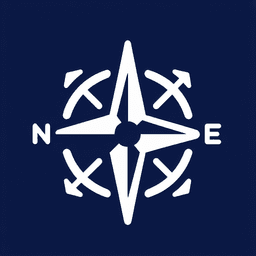
MAE Wind Direction: Definition and Examples
February 27, 2025
MAE Wind Direction
The term MAE Wind Direction refers to the Mean Absolute Error (MAE) in predicting wind direction, a crucial metric for sailors and maritime users. Understanding wind direction is vital for navigation, safety, and optimizing sailing routes.
Importance for Maritime Users:
- Navigation: Accurate wind direction predictions help in plotting efficient courses, avoiding adverse weather conditions, and ensuring timely arrivals.
- Safety: Knowing the wind direction aids in preparing for potential hazards such as storms or high winds, which can affect vessel stability and safety.
- Performance: Sailors can optimize their routes and sail settings based on wind direction, improving speed and fuel efficiency.
Understanding MAE:
MAE is a statistical measure used to assess the accuracy of wind direction forecasts. It calculates the average magnitude of errors between predicted and actual wind directions, providing a straightforward metric for evaluating forecast performance.
Applications in Maritime Operations:
- Route Planning: By analyzing MAE, maritime operators can choose the most reliable forecasts, enhancing route planning and decision-making.
- Weather Forecasting: MAE helps in refining weather models, leading to more accurate predictions that are crucial for maritime operations.
- Risk Management: Understanding forecast accuracy through MAE allows for better risk assessment and management, ensuring safer maritime operations.
In summary, MAE Wind Direction is an essential concept for maritime users, providing insights into the reliability of wind forecasts and aiding in various aspects of maritime navigation and safety.
Understanding MAE Wind Direction in Maritime Context
Wind direction is a crucial factor in maritime navigation, affecting everything from sailing routes to safety measures. In the maritime world, wind direction is typically defined by the direction from which the wind originates. For instance, a north wind blows from the north to the south.
Common Questions About Wind Direction
How do you define wind direction?
Wind direction is defined as the direction from which the wind is blowing. In maritime terms, this is crucial for navigation and safety. It is usually measured in degrees, with north being 0° or 360°, east 90°, south 180°, and west 270°.
What is the rule for wind direction?
The rule for wind direction is that it is always reported from the direction it originates. For example, a wind blowing from the north is called a north wind. This is important for mariners to understand the wind's impact on their vessel's course and speed.
What are the terms for wind direction?
In maritime navigation, wind direction is often described using compass points. Some common terms include:
- North (N): 0° or 360°
- East (E): 90°
- South (S): 180°
- West (W): 270°
- North-Northeast (NNE): 22.5°
- East-Southeast (ESE): 112.5°
What is the nautical term for wind direction?
In nautical terms, wind direction is often referred to as "windward" and "leeward." Windward is the direction from which the wind is coming, while leeward is the direction the wind is blowing towards. Understanding these terms is essential for sailors to navigate effectively.
Conclusion
Understanding wind direction is vital for maritime navigation. It helps in planning routes, ensuring safety, and optimizing sailing conditions. Mariners must be adept at reading wind directions and using this information to their advantage.




